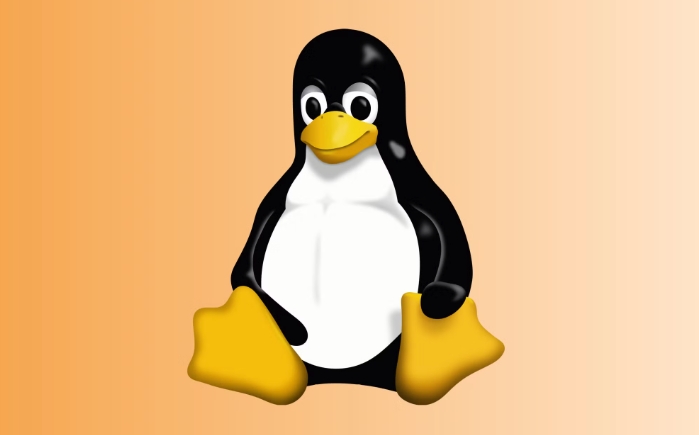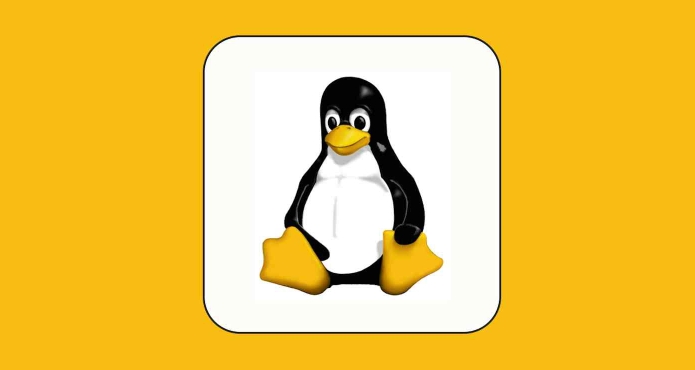chmod is a command in Linux to modify file or directory permissions. To understand its usage, you need to master the permission representation method and user classification; permissions are divided into read (r), write (w), and execute (x), and users are divided into owner (u), group (g), and others (o); permissions can be set by character mode or numeric mode; 1. Character mode specifies user categories through u, g, o, a, combined with, -, = operation permissions; 2. The digital mode uses three-digit number to represent permissions, 4 is read, 2 is write, and 1 is execution, and after combination, it means 7 is used to represent rwx; 3. It is recommended to check the current permissions before modification to avoid misoperation, and use others to write permissions with caution. Sensitive files can be set with permissions recursively by the -R parameter.

In Linux systems, chmod is a command used to modify file or directory permissions. Understanding and using chmod correctly is very important for ensuring system security and collaborative development. It is actually not difficult to master its usage. The key is to understand how permissions are represented and the meaning of permissions of different users.

What are permissions: read, write, execute
Each file in Linux has three types of user permission settings: owner (user), group (group) and others . Each type of user can have the following three permissions:

- Read (r) : Allows viewing file content or listing files in a directory
- Write (w) : Allows to modify file content or delete/rename files in the directory
- Execution (x) : Allows running files (such as scripts or programs), or to enter a directory
For example, permission -rwxr-xr-- means:
- The owner can read, write, and execute
- Group members can read and execute
- Others can only read
These permissions can be modified by characters or numbers.

How to modify permissions using chmod: Character mode
Character mode is suitable for beginners to understand the process of permission changes. The basic format is:
chmod [user category][operator][permission] file name
Common user categories include:
-
u: Owner -
g: Group -
o: Others -
a: Everyone (equivalent to ugo)
Operator:
-
-: Remove permissions -
=: Set to a specific permission
To give a few examples:
Add execution permissions to the file owner:
chmod ux filename
Remove the write permissions of group members:
chmod gw filename
All people only reserve read permissions:
chmod a=r filename
This method is intuitive and easy to understand and is suitable for partial adjustments to permissions.
Set permissions with numbers: simple and efficient
Permissions can also be represented by three digits, each representing the permission value of a type of user:
-
4means reading (r) -
2means writing (w) -
1means execution (x)
Combining these three can get the corresponding permission values:
| Permissions | Value |
|---|---|
| r-- | 4 |
| rw- | 6 |
| rx | 5 |
| rwx | 7 |
for example:
- Set file permissions to
rwxr-xr--:chmod 754 filename
This method is more suitable for use in scripts or when you need to set complete permissions at once.
Common precautions and suggestions
- It is best to use
ls -l filenameto view the current permission before modifying the permissions to avoid misoperation. - Don't easily write permissions to "other people", especially sensitive configuration files or log files.
- If you want all files and subdirectories in the directory to apply the same permissions, you can add the
-Rparameter to recursively set:chmod -R 755 directoryname
- Some systems or services require specific permissions to work properly, such as web directory is generally set to
755, while upload directory may be set to775or777(use with caution).
Basically that's it. After mastering the basic usage of chmod , you can better manage file security in Linux systems.
The above is the detailed content of How to change permissions in Linux using chmod. For more information, please follow other related articles on the PHP Chinese website!

Hot AI Tools

Undress AI Tool
Undress images for free

Undresser.AI Undress
AI-powered app for creating realistic nude photos

AI Clothes Remover
Online AI tool for removing clothes from photos.

Clothoff.io
AI clothes remover

Video Face Swap
Swap faces in any video effortlessly with our completely free AI face swap tool!

Hot Article

Hot Tools

Notepad++7.3.1
Easy-to-use and free code editor

SublimeText3 Chinese version
Chinese version, very easy to use

Zend Studio 13.0.1
Powerful PHP integrated development environment

Dreamweaver CS6
Visual web development tools

SublimeText3 Mac version
God-level code editing software (SublimeText3)

Hot Topics
 5 Best Open Source Mathematical Equation Editors for Linux
Jun 18, 2025 am 09:28 AM
5 Best Open Source Mathematical Equation Editors for Linux
Jun 18, 2025 am 09:28 AM
Are you looking for good software to write mathematical equations? If so, this article provides the top 5 equation editors that you can easily install on your favorite Linux distribution.In addition to being compatible with different types of mathema
 SCP Linux Command – Securely Transfer Files in Linux
Jun 20, 2025 am 09:16 AM
SCP Linux Command – Securely Transfer Files in Linux
Jun 20, 2025 am 09:16 AM
Linux administrators should be familiar with the command-line environment. Since GUI (Graphical User Interface) mode in Linux servers is not commonly installed.SSH may be the most popular protocol to enable Linux administrators to manage the servers
 Gogo - Create Shortcuts to Directory Paths in Linux
Jun 19, 2025 am 10:41 AM
Gogo - Create Shortcuts to Directory Paths in Linux
Jun 19, 2025 am 10:41 AM
Gogo is a remarkable tool to bookmark directories inside your Linux shell. It helps you create shortcuts for long and complex paths in Linux. This way, you no longer need to type or memorize lengthy paths on Linux.For example, if there's a directory
 What is a PPA and how do I add one to Ubuntu?
Jun 18, 2025 am 12:21 AM
What is a PPA and how do I add one to Ubuntu?
Jun 18, 2025 am 12:21 AM
PPA is an important tool for Ubuntu users to expand their software sources. 1. When searching for PPA, you should visit Launchpad.net, confirm the official PPA in the project official website or document, and read the description and user comments to ensure its security and maintenance status; 2. Add PPA to use the terminal command sudoadd-apt-repositoryppa:/, and then run sudoaptupdate to update the package list; 3. Manage PPAs to view the added list through the grep command, use the --remove parameter to remove or manually delete the .list file to avoid problems caused by incompatibility or stopping updates; 4. Use PPA to weigh the necessity and prioritize the situations that the official does not provide or require a new version of the software.
 Install LXC (Linux Containers) in RHEL, Rocky & AlmaLinux
Jul 05, 2025 am 09:25 AM
Install LXC (Linux Containers) in RHEL, Rocky & AlmaLinux
Jul 05, 2025 am 09:25 AM
LXD is described as the next-generation container and virtual machine manager that offers an immersive for Linux systems running inside containers or as virtual machines. It provides images for an inordinate number of Linux distributions with support
 How to create a file of a specific size for testing?
Jun 17, 2025 am 09:23 AM
How to create a file of a specific size for testing?
Jun 17, 2025 am 09:23 AM
How to quickly generate test files of a specified size? It can be achieved using command line tools or graphical software. On Windows, you can use fsutilfilecreatenew file name size to generate a file with a specified byte; macOS/Linux can use ddif=/dev/zeroof=filebs=1Mcount=100 to generate real data files, or use truncate-s100M files to quickly create sparse files. If you are not familiar with the command line, you can choose FSUtilGUI, DummyFileGenerator and other tool software. Notes include: pay attention to file system limitations (such as FAT32 file size upper limit), avoid overwriting existing files, and some programs may
 How to install Linux alongside Windows (dual boot)?
Jun 18, 2025 am 12:19 AM
How to install Linux alongside Windows (dual boot)?
Jun 18, 2025 am 12:19 AM
The key to installing dual systems in Linux and Windows is partitioning and boot settings. 1. Preparation includes backing up data and compressing existing partitions to make space; 2. Use Ventoy or Rufus to make Linux boot USB disk, recommend Ubuntu; 3. Select "Coexist with other systems" or manually partition during installation (/at least 20GB, /home remaining space, swap optional); 4. Check the installation of third-party drivers to avoid hardware problems; 5. If you do not enter the Grub boot menu after installation, you can use boot-repair to repair the boot or adjust the BIOS startup sequence. As long as the steps are clear and the operation is done properly, the whole process is not complicated.
 NVM - Install and Manage Multiple Node.js Versions in Linux
Jun 19, 2025 am 09:09 AM
NVM - Install and Manage Multiple Node.js Versions in Linux
Jun 19, 2025 am 09:09 AM
Node Version Manager (NVM) is a simple bash script that helps manage multiple Node.js versions on your Linux system. It enables you to install various Node.js versions, view available versions for installation, and check already installed versions.NV






